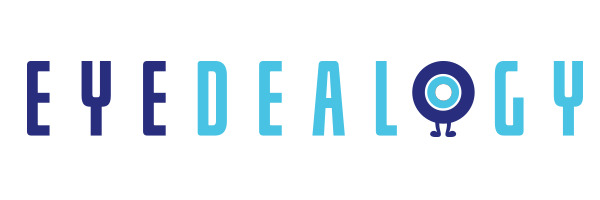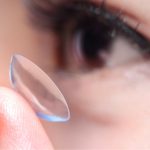My child has myopia: 600 degrees by Primary 1
This article was first published on Young Parents
At five years old, Kelvin’s (not his real name) eyesight was so bad that he could hardly make out what his kindergarten teacher was writing on the whiteboard.
An eye check revealed that he had myopia of over 300 degrees in his left eye, and 200 degrees in his right.
“At home, there was no need to look at faraway objects or words, so we didn’t realise that he could not see clearly. Plus, he was so young, nobody thought his eyesight would be so bad,” explains his mum Angeline Koh.
His myopia began rising at the rate of 100 degrees every six months, and by Primary 1, he was wearing spectacles with thick lenses of 600 degrees on the left side, and 350 degrees on the right.
Kids with high myopia
Singapore has one of the highest myopia rates in the world. One in five Singapore kids are myopic when they start primary school.
By the time they are 18 years old, the figure goes up to seven in 10, shares Dr Inez Wong, consultant ophthalmologist and director of the Paediatric Ophthalmology and Strabismus Service at Eagle Eye Centre.
Most Singapore kids have more moderate myopia of between 200 and 400 degrees, says Adjunct Associate Professor Audrey Chia, senior consultant at the Paediatric Ophthalmology and Strabismus Service at the Singapore National Eye Centre (SNEC) and KK Women’s and Children’s Hospital (KKH). She is also the senior clinical investigator and co-head of the Myopia Research Unit at the Singapore Eye Research Institute.
Kelvin’s 600-degree short-sightedness, however, makes him a high-myopia statistic.
His sedentary activities and his parents’ genes could have dealt a double blow to his eyesight. Both his parents have high myopia of over 600 degrees.
Unlike his elder sister, who loves outdoor activities, Kelvin is a homebody who prefers to read and play computer games. Now in secondary school, his sister’s myopia has stabilised at 200 degrees.
Dr Zena Lim points out that excessive near work is a major contributing factor of myopia.
“On the other hand, we now know that spending time outdoors protects you against myopia. This may partly explain the differences in severity of myopia between Kelvin and his sister,” she says. Dr Lim is a visiting consultant at the Ophthalmology Service at KKH, and a consultant at the Paediatric Ophthalmology and Adult Strabismus Service at the SNEC.
There is currently no local data on kids with this extreme form of myopia, but about 10 per cent of adults here have it, compared to just 2 per cent in Western countries, Dr Wong points out.
Long-term problems
According to Dr Lim, children with high myopia face a greater risk of developing other eye conditions – such as glaucoma, cataracts and retinal detachment – at an earlier age in adulthood. All of them can lead to blindness.
The bad news is that once Junior develops myopia, there’s nothing you can do to reverse the condition.
According to Dr Wong of Eagle Eye Centre, most treatment strategies focus on slowing its progression.
“The degree will never decrease, only increase, so catching it early may allow parents to implement measures like increasing outdoor time,” she says.
To prevent his vision from deteriorating further, Kelvin was put on atropine eye drops, which his mother helps to instil three times a week.
This therapy is currently the most effective method of slowing down myopia and is the only one well-proven by several clinical studies, says Dr Lim of KKH and SNEC.
It seems to have worked. Kelvin, now aged nine, has switched to a lower dose treatment and his short-sightedness has stabilised in the last two years.
According to Dr Lim, who treated him, the drops are suitable for school-going children with moderate to high myopia, as well as those whose myopia progress rapidly over time.
Studies show that higher-dose 1 per cent atropine eye drops can slow down myopia by 80 per cent over two years, while the lower-dose 0.01 per cent version slows it down by 50 to 60 per cent over the same period of time, says Dr Lim.
There are some side effects with this treatment, but the discomfort is a small price to pay.
“Kelvin’s eyes became sensitive to light, and he feels uncomfortable when he is out in the sun. But he knows the eye drops are good for him, so he doesn’t complain much,” says Angeline.
Change your lifestyle
While the atropine treatment may be an eyesight-saver, Dr Wong advises parents to first try some simple lifestyle changes to stem myopia progression.
Dr Lim suggests limiting near activities such as reading and using handheld gadgets to only 30 minutes at a time. Rest the eyes after that, and encourage more outdoor activities.
Prof Chia of SNEC and KKH adds that parents should aim to let Junior enjoy about two hours of outdoor activity daily. Some exposure to daytime sunlight is also helpful in protecting eyesight.
Kelvin’s myopia scare prompted Angeline to change his lifestyle habits, too. She now sets a 15- to 30-minute limit on his computer time, and has enrolled him in several outdoor sports like swimming and wushu.
“Now, he loves outdoor games like his sister. Hopefully, with the eye drops, his myopia will remain under control,” she says.






